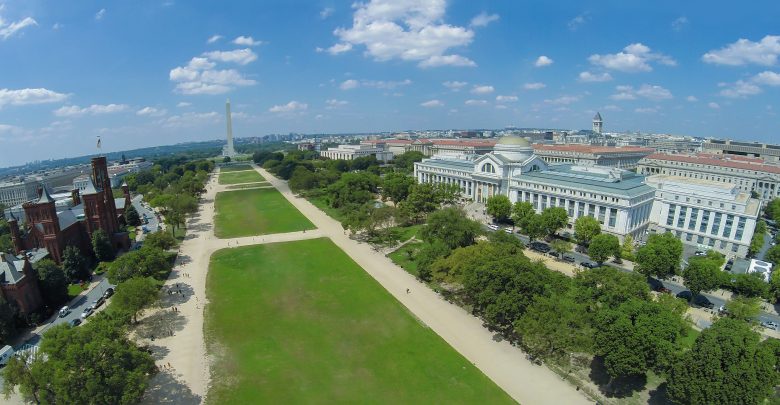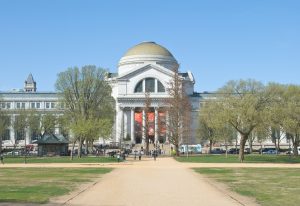The Smithsonian Plan: Tips for Taking it All in
How to see America's greatest collection of museums

For many, a visit to the Smithsonian Museums is a dream come true. This is understandable. After all, this collection of museums is enormous, thorough, and easily some of the best in the country—if not the world.
These museums are so big and wonderful, in fact, that many first-time visitors are overwhelmed by the options they offer. Including the zoo, there are 20 Smithsonian locations in all. 18 of these are located in Washington, D.C., and 11 of them are in the National Mall, meaning that even if you plan to stay close to the usual tourist areas, you’ll still have a lot of decisions to make.
Luckily, there are plenty of people who have been there and done that, meaning finding good advice is never too difficult. In fact, by reading through this very article, you’ll come across some of our best advice for visiting the D.C. Smithsonian locations.

newsdesk.si.edu
Time Your Visit Right
As you might have guessed, the Smithsonian Museums are a hugely popular tourist destination. This means that each museum can get pretty crowded on weekends and holidays, as well as during special events.
In order to ensure you visit during a low-crowd period, try scheduling your visit for a time when school is in session, and during the work week. Additionally, you’ll want to avoid the National Cherry Blossom Festival, which takes place each spring.
Allow Time
Seeing 11 or more museums takes time. Honestly, even just seeing a couple of these enormous galleries can take quite a while.
Therefore, you will want to allow yourself as much time as possible. If you are stuck with only a limited amount of time, choose a few locations that pique your interest and set out to fully see those rather than trying to quickly hop from one museum to the next.
Stay Nearby
While commuting into D.C. is fairly easily done, the closer you can stay to the museums, the more time you’ll have to explore them. Try to find a nearby hotel or rental in order to reduce the amount of time spent traveling each day.
Pack a Lunch
You will definitely be checking out the museums well past lunchtime. While there are cafes available, most are only mediocre at best, and going offsite is a waste of valuable time.
Therefore, we recommend packing a lunch to eat on the go. You won’t be able to eat your food inside the museum, but you will be allowed to carry it in. When you get hungry, simply head outside for a quick bite before moving to the next gallery.
Be Prepared for Security Checks
Every Smithsonian Museum has a security check at the entryway. These are no big deal, but it does help to be prepared. While you will be allowed to carry a sack lunch in, open food and drink are not allowed. Weapons are also against the rules, and you will be required to empty your pockets and walk through a metal detector, meaning it’s ideal to keep pocket contents and any metal on your clothing to a minimum.

Begin at the Visitor’s Center
Because there are so many museums to choose from, many people find it helpful to begin at the visitor’s center in order to properly orient themselves. This building is home to a small coffee shop where you can get started with a quick pick-me-up. The staff at the center is extremely helpful and is always happy to explain absolutely anything, and the maps provided can be a lifesaver.
Rent a Bike
If you plan to see several museums, and especially if those museums are far apart, you may want to consider renting a bike. Bike rentals are available up and down the street and allow you to travel quickly and easily, helping you maintain stamina throughout your trip.

ETIENjones / Bigstock.com
Get Ready to Walk
Even if you do rent a bike, you’ll still be walking quite a lot. As mentioned before, these museums are huge, and even just seeing all of one would require an extensive walk. Obviously, you can take breaks as needed, and walking slowly is encouraged, but you’ll still want to wear comfortable, supportive shoes in order to avoid blisters and keep sore feet to a minimum.
Head to the Top
Most people begin their visit to any museum on the bottom floor. The problem with this is that it puts the majority of guests in the same areas at the same time. Therefore, if you arrive in the morning, it’s actually best to begin on the top floor and work your way down. This will help you avoid those traffic jams that tend to happen when you follow the crowds.
Starting a new museum in the afternoon? You might be better off starting at the bottom in these cases.

jiawangkun / Bigstock.com
Take Your Time
Our last tip may seem a bit obvious, but unfortunately, it isn’t always taken seriously: Take your time.
Each of the Smithsonian Museums has truly spectacular things to offer. Not only that, but each museum is quite large, meaning there are more than just a few of these spectacular things to see and do. In order to really take it all in you simply have to take your time.
This might mean you have to skip some museums. It may even mean seeing only one museum, but it’ll also mean you saw everything that museum had to offer. Besides, it’s always good to leave something to come back to, right?
These are our top tips for visiting these amazing museums. We love every single one we’ve visited, and we know you will too. By using this helpful advice, you’ll be able to enjoy your visit even more and—hopefully—entirely without incident or even a hiccup.
Have fun, and be sure to learn something new while you’re at it!




